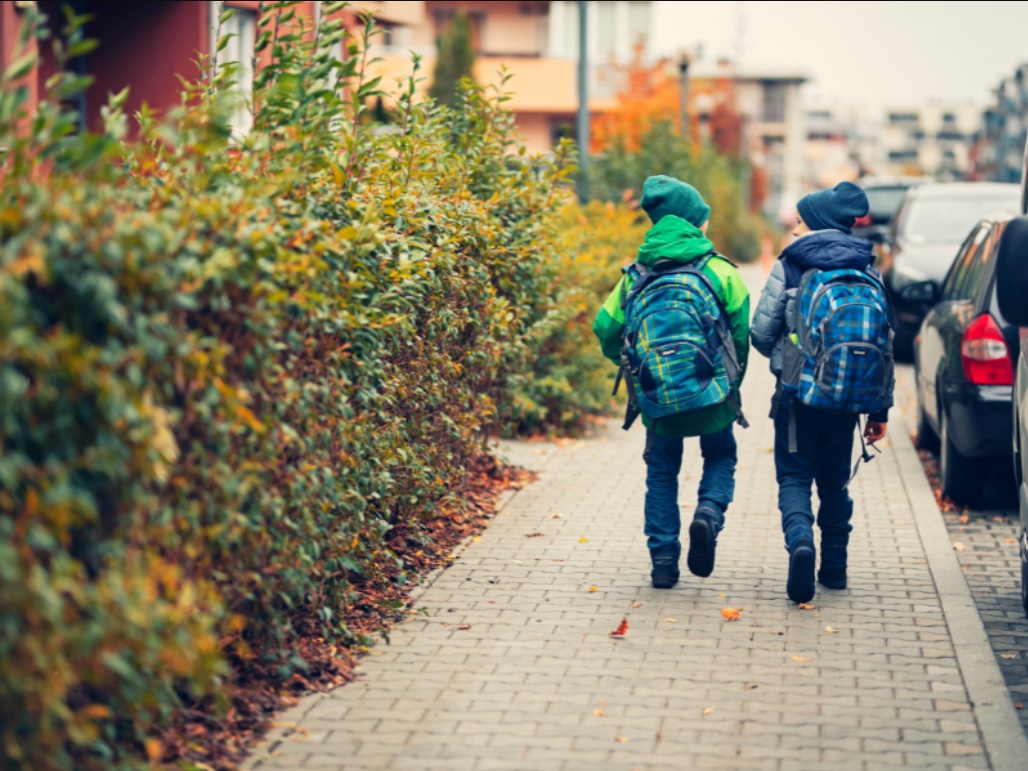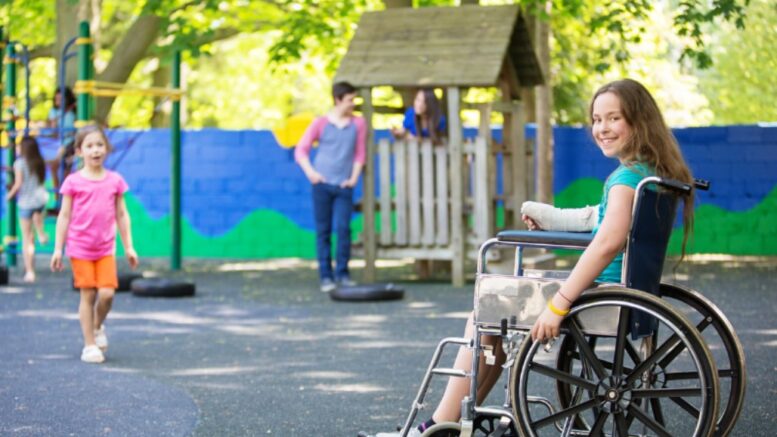Ever pondered what is the secret to mental resilience? Hint: It’s not found in a pill bottle or an inspirational quote.
Imagine, if you will, a child exploring their neighborhood. They’re biking around freely, eyes wide with curiosity and discovery. That freedom to move is powerful, like getting the keys to your own mind.
Mental Health Benefits of Independent Mobility
It sounds complex, but at its core lies something as simple as letting children walk home from school alone or play unsupervised in their local park.
The beauty here isn’t just physical health – stronger legs, a healthier heart – but also mental well-being. This autonomy can mold resilient adults who know how to navigate life’s challenges effectively.
Excited to learn more? Strap in as we explore the world of independent mobility. Let’s discover how we can promote this essential element of our children’s growth.
Physical Activity as a Pillar of Mental Health
The role that physical activity plays in mental health is similar to the foundation stones in a building. Just like these stones hold up the structure, regular exercise helps uphold our mental well-being. The World Health Organization recognizes this significance and recommends incorporating active travel into our daily routines.
The Benefits of Active Travel for Mental Well-Being
Ever noticed how much clearer your mind feels after a brisk walk or bike ride? That’s not just coincidence – it’s science. Engaging in active travel, such as walking or cycling to work instead of driving, can help us feel more alert, energetic, and positive throughout the day.
This isn’t just about getting those legs moving; it’s also about breaking free from routine. Changing scenery stimulates our minds, while outdoor light exposure can even boost serotonin levels (our ‘happy’ hormone). It’s clear then: adding some mobility magic to transportation does wonders for our psyche.
A study showed that children who engage regularly in physical activities have better mental health outcomes compared with their less-active peers. Physical activity acts as an outlet for stress release and provides them with opportunities for social interaction, which contributes significantly to good emotional health.
Incorporating Active Travel into Daily Life
To reap maximum benefits from active commuting, make sure you keep things enjoyable. Try new routes home occasionally or switch between modes—say, biking one day, walking another? But remember: safety first. Always wear appropriate gear if needed, especially when cycling on busy roads.
You might think squeezing extra time out every morning seems impossible, but here’s an insider tip: planning ahead works wonders. Prepping clothes or packing lunches at night lets you get ready quicker the next morning, giving you that extra time to walk or cycle. Little tweaks like these can help us lead healthier lives, both mentally and physically.
It’s essential to understand that even the tiniest of actions can be meaningful. Even if a full-on commute isn’t possible for you right now, small changes such as walking around the block during lunch breaks could make a difference too. As with any journey in life – start small but aim big.
Factors Influencing Independent Mobility
We all know that a bird needs to leave the nest eventually. What impacts when and how a young person can start to move independently? When it comes to our children, there’s no difference – their journey towards independence is shaped by several key elements.
Research has shown three main factors play crucial roles in shaping a child’s level of independent mobility: parental involvement, societal norms, and neighborhood safety. Let’s explore these ingredients more closely.
Parental Involvement in Child’s Independence
The first factor is parental involvement. Just as fledglings learn from their parents how to fly before they venture out on their own, children often mimic adult behavior when learning new skills or navigating unfamiliar environments. Parents who encourage exploration and provide safe opportunities for practice can foster greater levels of independent mobility in their kids.

In contrast, overprotective parenting practices may unintentionally limit a child’s exposure to different situations where they could develop the necessary confidence and competence for independence. So remember, being there for your child doesn’t always mean doing everything for them.
Societal Norms Around Independence
The next piece of the puzzle lies within societal norms around independence itself, basically answering the question, “What age should my kid start flying solo?” Societal expectations play an important role here; cultures valuing early autonomy might see children achieving higher degrees of self-sufficiency at younger ages than those emphasizing family interdependence.
This cultural perspective influences not only individual families but also wider community attitudes towards childhood freedom—think free-range versus helicopter parenting styles—and can impact whether young people feel empowered or discouraged about taking up independent activities.
Neighborhood Safety for Children’s Independence
Last but not least, neighborhood safety is a crucial consideration. Just as you wouldn’t release your pet parrot in a jungle full of predators, parents are less likely to let their children roam freely in areas perceived as unsafe.
The availability of safe infrastructure for walking or biking can greatly encourage independent mobility. Conversely, high traffic volumes and a lack of pedestrian-friendly routes might restrict opportunities for autonomous exploration.
So, it’s pretty obvious that helping folks get around on their own needs some serious attention.
The Role Unstructured Play Plays in Independent Mobility
When we think about a child’s independence, what comes to mind? Maybe it’s their first steps or the first time they ride a bike. But did you know that unstructured play is also an essential ingredient for developing independent mobility and promoting mental health in children?
This might sound surprising, but let me explain. Unstructured play offers kids the opportunity to hone skills like decision-making, problem-solving, and resilience.
Unleashing Creativity Through Play
In unstructured play scenarios, children are given the freedom to explore and create without specific rules or guidelines. This form of activity helps them develop creativity, which goes hand-in-hand with independence. It’s through this exploration that kids learn how to navigate their world on their own terms.
Sounds pretty cool, right? Not only does this kind of self-guided exploration foster physical dexterity but it has been found to significantly improve mental well-being too.
Nurturing Mental Health Through Independence
Research has demonstrated a connection between starting autonomous exercises early and better mental well-being results later on in life, which is something we don’t frequently link with little kids. The act of playing independently gives them confidence and boosts self-esteem, all crucial factors contributing to positive mental health.
- They make decisions on the go while at play – honing critical thinking skills.
- The sense of accomplishment when mastering new games fosters self-confidence.
- Navigating social dynamics within peer groups during unstructured play builds emotional intelligence.
A Gateway To Real-World Skills
As a parent, you may be wondering how to foster unstructured play in your child’s life. “But how can I promote unstructured play in my child’s life?” It’s simple. Provide them with safe environments to explore and let their imagination run wild. Whether it’s playing superheroes at the park or building castles out of sand, each game is an opportunity for your child to learn new skills.
Overcoming Barriers to Independent Mobility
Safety concerns, overprotective parenting practices, and a lack of safe infrastructure often pose challenges to independent mobility. “There’s always a solution if you’re determined enough”? It applies here too. Let’s tackle these impediments straight on.
Confronting Safety Concerns
When it comes to safety concerns surrounding independent mobility, education is key. By teaching children about traffic rules and pedestrian safety from an early age, we make sure they are prepared for their journeys alone.

This doesn’t mean you need a degree in road safety management. Simple steps like explaining street signs or practicing road crossing techniques can help them get started on this path towards independence safely.
Tackling Overprotective Parenting Practices
Fear not, parents; wanting to keep your child safe isn’t bad—it’s natural. However, excessive protection might hinder their development of independent skills. Think of it as learning how to ride a bike—there will be falls, but those experiences teach balance and resilience.
Research has shown that fostering self-confidence in children encourages more exploration, leading to increased levels of independent mobility.
Navigating Through Lack Of Safe Infrastructure
A community that lacks safe routes can indeed be daunting when considering allowing your child some freedom. Tackling this barrier effectively requires collective action by communities and local authorities alike – petitioning for safer crossings or better-lit streets could go miles (pun intended) toward promoting active travel among youngsters.
Bonus Tip: Embracing Technology For Peace Of Mind
Rather than seeing technology as an adversary, it can be leveraged to provide extra security without sacrificing a child’s independence. While it’s crucial to promote outdoor play and exploration, tools like GPS trackers for kids can provide an extra layer of security without compromising their independence. This gives parents peace of mind while children experience the mental health benefits of independent mobility.
Remember, each small step towards independent mobility contributes to improved mental well-being in your child. It might be challenging at first, but as they say, Rome wasn’t built in a day.
Conclusion
Independent mobility is a game-changer. We’ve explored its meaning and the massive role it plays in shaping our kids’ mental health. It molds resilience and self-reliance and gives them their first taste of autonomy.
The benefits are clear: healthier minds through active travel; nurturing independence by letting them explore unsupervised; and recognizing factors that influence independent mobility like parental involvement or neighborhood safety.
But let’s not forget the barriers – overprotective parenting practices or a lack of safe infrastructure can hinder progress. However, with determination and strategic actions, we can overcome these obstacles for our children’s better future. In essence, harnessing the Mental Health Benefits of Independent Mobility is about allowing kids to be just that—kids!
Article edited and fact checked by our editorial team.
References:
- Bray N, Kolehmainen N, McAnuff J, Tanner L, Tuersley L, Beyer F, Grayston A, Wilson D, Edwards RT, Noyes J, Craig D. Powered mobility interventions for very young children with mobility limitations to aid participation and positive development: the EMPoWER evidence synthesis. Health Technol Assess. 2020 Oct;24(50):1-194. doi: 10.3310/hta24500. PMID: 33078704; PMCID: PMC7681349.
- Novak I, McIntyre S, Morgan C, Campbell L, Dark L, Morton N, et al. A systematic review of interventions for children with cerebral palsy: state of the evidence. Dev Med Child Neurol 2013;55:885–910. https://doi.org/10.1111/dmcn.12246 doi: 10.1111/dmcn.12246.
- Pelletier CA, Cornish K, Sanders C. Children’s Independent Mobility and Physical Activity during the COVID-19 Pandemic: A Qualitative Study with Families. Int J Environ Res Public Health. 2021 Apr 23;18(9):4481. doi: 10.3390/ijerph18094481. PMID: 33922530; PMCID: PMC8122942.
